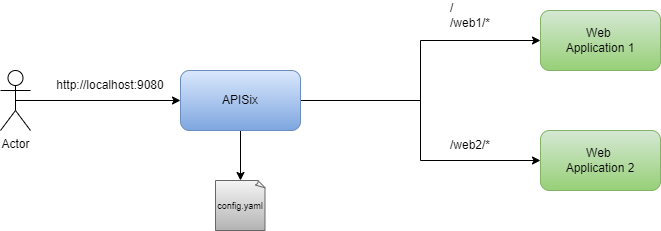This blog post for running apisix without ETCD.
Why❓
By default, apisix depends on etcd for storing configuration.
But most of the time your upstream services are fixed. Not changed often. Then do we really need etcd for configuration. Maintain and managing etcd cluster is pain and money 💲
Here is the standalone mode to solve this.
🤔How ?
If you are geek, here is the Github repo for docker-compose example with full source code. Go there.
config.yaml
This file has the configuration as you do earlier
deployment:
role: data_plane
role_data_plane:
config_provider: yaml
#END
Here the config_provider as yaml.
This has to be mounted as /usr/local/apisix/conf/config.yaml
apisix.yaml
This file is responsible for routes, services and upstreams. The file will be look like
routes:
-
uri: /*
service_id: 1
services:
-
id: 1
upstream_id: 1
upstreams:
-
id: 1
nodes:
"web1:80": 1
type: roundrobin
#END
This has to be mounted as /usr/local/apisix/conf/apisix.yaml
docker-compose.yml
services:
apisix:
image: apache/apisix:3.10.0-debian
environment:
APISIX_STAND_ALONE: "true"
volumes:
- ${PWD}/apisix.yaml:/usr/local/apisix/conf/apisix.yaml
- ${PWD}/config.yaml:/usr/local/apisix/conf/config.yaml
ports:
# Web - Proxy
- 9080
The common areas where manual errors occur
- The mounting path of the files.
- The content of the files. The different content for different files.
- The
#ENDline at the end of file. - The environmental variable for apisix
APISIX_STAND_ALONE: "true"
What is on the Repo?
There are two upstreams behind the APISix.
The URI / and /web1 forwards to the web1.
The URI /web2 forwards to the web2.
These routes, services and upstreams configured in apisix.yaml

